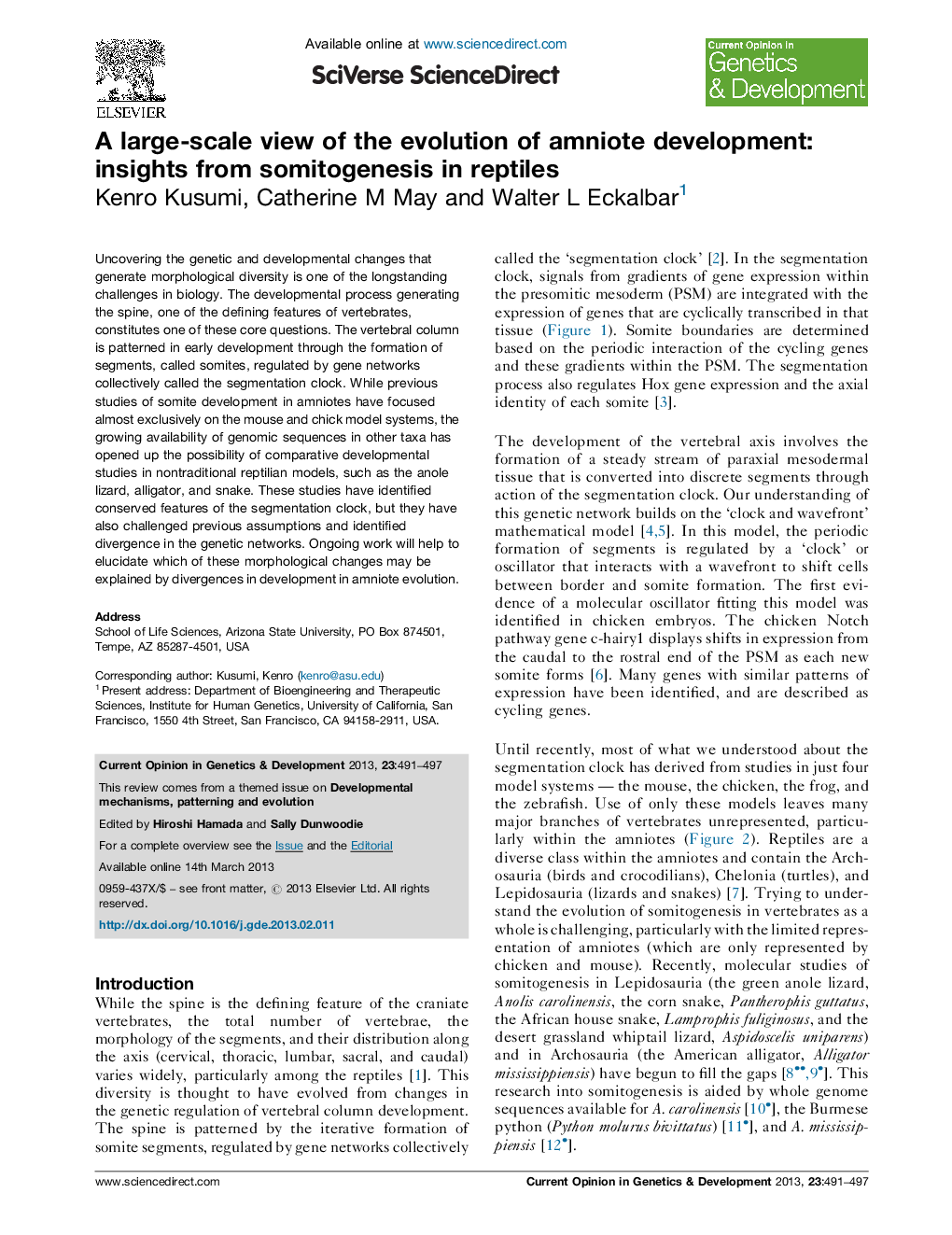| Article ID | Journal | Published Year | Pages | File Type |
|---|---|---|---|---|
| 2784848 | Current Opinion in Genetics & Development | 2013 | 7 Pages |
Uncovering the genetic and developmental changes that generate morphological diversity is one of the longstanding challenges in biology. The developmental process generating the spine, one of the defining features of vertebrates, constitutes one of these core questions. The vertebral column is patterned in early development through the formation of segments, called somites, regulated by gene networks collectively called the segmentation clock. While previous studies of somite development in amniotes have focused almost exclusively on the mouse and chick model systems, the growing availability of genomic sequences in other taxa has opened up the possibility of comparative developmental studies in nontraditional reptilian models, such as the anole lizard, alligator, and snake. These studies have identified conserved features of the segmentation clock, but they have also challenged previous assumptions and identified divergence in the genetic networks. Ongoing work will help to elucidate which of these morphological changes may be explained by divergences in development in amniote evolution.
